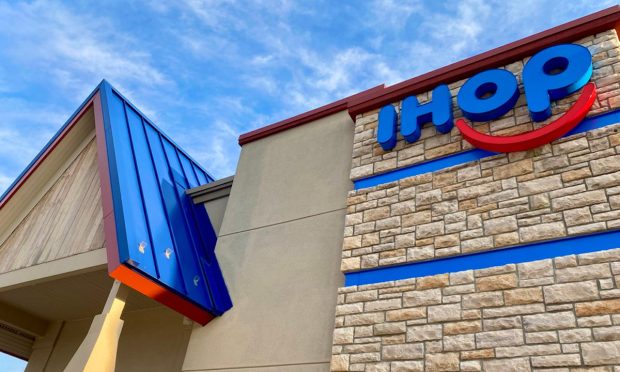IHOP Opens Fast-Casual Brand; Chipotle Offers Increased Personalization

Four months after announcing the resumption of its plans to launch its fast-casual brand flip’d, IHOP opened the doors of the chain’s first location in Lawrence, Kansas on Tuesday (Sept. 28).
Read more: IHOP Relaunching Fast-Casual Spin-off flip’d After Pandemic Delay
“Flip’d by IHOP is designed to serve our guests the food they love in a fast-casual setting, and technology plays a big role in this new restaurant to make the experience easier for to-go and off-premise occasions,” an IHOP spokesperson told PYMNTS in an email. “A number of our menu items are designed for portability and convenience, including our burritos, bowls, pancake bowls, burgers and more.”
The restaurant is more to-go-centric than the IHOP’s usual table-service model, though there is dining room seating available to customers who would like to dine on-premises. PYMNTS’ research from The Bring-It-To-Me Economy, created in collaboration with Carat from Fiserv, finds that consumers are now 31% likelier to eat their restaurant orders at home than they are to dine at a restaurant.
You may also like: Bring-It-to-Me Economy Ascends as Consumers Embrace Home-Centric Lifestyles
“Different from a traditional IHOP, customers can order via digital kiosks in-restaurant, and our Lawrence location has a mobile/online order pickup window, making convenience a priority when getting food to go,” the spokesperson said.
Findings from PYMNTS’ Restaurant Readiness Index, created in partnership with Paytronix, indicate that consumers are slow to engage with kiosks, with only 3% of the 25,000 consumers surveyed reporting that self-service kiosks would boost their spending. The report also found that restaurant managers view self-service kiosks as more essential to driving restaurants’ long-term success than consumers did, with 28% of the former versus 19% of the latter indicating that they believe the feature will be important to restaurants’ future success.
Also see: QSRs’ Lagging Loyalty-Reward Investment Hurts Innovation and Sales
Chipotle Adds In-App Dietary Preference Filters
Chipotle announced on Wednesday (Sept. 29) that it is adding a range of nutrition filters to its app, allowing consumers to see ingredients that fit with their diet. Filters include options for popular diets, such as plant-based, keto and Whole30, as well as for common allergens such as dairy and soy.
“Our real ingredients and the versatility of our menu have always catered to guests who prioritize health and wellness,” Chris Brandt, chief marketing officer, said in a statement. “Now, with a few easy taps, fans can make more informed decisions on the ingredients they feature in their custom Chipotle orders, and can easily find delicious options to fit any lifestyle.”
The app can also save dietary preferences for future orders. The move comes as many brands seek out ways to personalize their digital platforms to consumers’ needs and preferences, taking into account past ordering data as well as information about similar customers to show the most relevant messaging and recommendations.
“We are working to add a layer of customized user experience on top of customer data,” Jane McPherson, senior vice president of marketing for fast-casual chain Capriotti’s Sandwich Shop, told PYMNTS in an interview for the September/October edition of PYMNTS’ Order to Eat report. “Restaurant brands will probably start using more customer database platforms [whereby] all of their customer data is [on] one platform, and then omnichannel marketing sits on top of that customer database platform.”
Transformed by Digital Ordering, First Watch Goes Public at $18 per Share
First Watch, a breakfast and lunch restaurant chain with over 400 locations across 29 states, announced on Thursday (Sept. 30) that it was pricing its initial public offering (IPO) at $18 per share, with 9,459,000 shares, for a total of more than $170 million.
The company went public on Friday (Oct. 1) under the symbol FWRG, intending to use the proceeds to pay off its outstanding debt. The restaurant has been getting increasingly digital since the start of the pandemic, building out the capabilities of its app with increased off-premise options. This shift has changed the company’s model, allowing it to meet consumers’ needs in more hours of the day.
“Consumers want the ability to order what they want and when they want it, without regard to traditional daypart conventions,” stated the company’s U.S. Securities and Exchange Commission (SEC) filing in advance of its IPO. “Increasingly busy schedules, the rise of the ‘gig’ economy, flexible job hours and the growth of remote workers, trends magnified by the COVID-19 pandemic, are powering demand for convenient, fast and flexible daytime dining offerings from our all-day menu.”
Related news: Capriotti’s on Leveraging Digital Tools, Data Analytics to Drive Customer Loyalty
National Restaurant Association: Recovery Has Reversed
After a swell of optimism in the early months of the vaccine rollout, restaurants are once again facing a difficult landscape. The National Restaurant Association, the trade association representing over 500,000 restaurant businesses, announced the results of its September economic impact survey of 4,000 restaurant operators on Wednesday (Sept. 29).
The report found that well over half (63%) of restaurants are performing below pre-pandemic levels and that almost all restaurants are paying more for food and labor.
“Our nation’s restaurant recovery is officially moving in reverse,” Sean Kennedy, executive vice president of Public Affairs for the National Restaurant Association, said in a statement. “The lingering effects of the delta variant are a further drag on an industry struggling with rising costs and falling revenue.”
The most recent U.S. Census Bureau report, which includes data through August 2021, finds that restaurant sales held flat in August after months on the rise. These figures have not shown sales to fall significantly since February.
